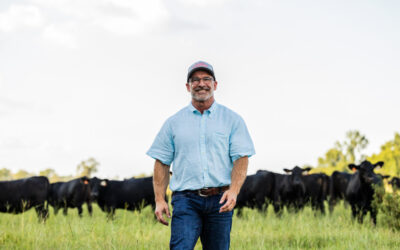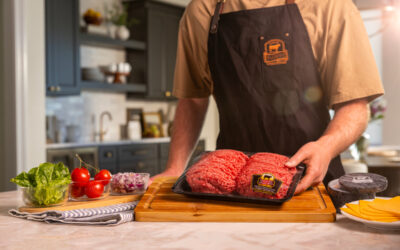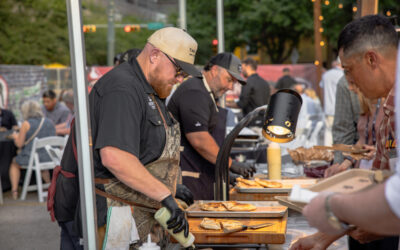
Equal opportunity
This industry isn’t just David & Goliath. We have farms and ranches of all shapes and sizes, and we celebrate that diversity.
A few weeks ago I said that when it came to feedlots that it’s not about the size. I’d echo that statement today.
Yet some people still think we’re just for the “big guy” or the “corporate farms.” But at CAB we’re an equal opportunity market signal. Find out what I mean by that as I bust this one:
Myth—I have to be a big producer to participate in CAB premiums.
Fact—Any producer of any size can aim for quality and reap rewards.
You’ve probably heard me say this before: CAB was founded in 1978 to increase demand for Angus cattle by creating pull-through demand for consistently high-quality branded beef. Through market price signals, CAB creates premiums for fed cattle, feeder cattle and all Angus cattle with predictable and documented genetics.
(Look back to this past Mythbuster post if you want a refresher on how cattle earn CAB premiums.)
That’s not to say that being smaller doesn’t present challenges. The good news is that many folks have gone before you and have drafted several “how-to” plans.
Take the NEMO (Northeast Missouri) group, which was spearheaded by veterinarian Imogene Latimer. Here’s an excerpt from the story that then-intern Chelsea Good wrote a few years back: The group commingles its calves for backgrounding, then sells to feedlots in uniform lots while negotiating to get information feedback. It also sends some calves to Iowa’s Tri-County Steer Carcass Futurity.
“We wanted to see the data and look at how we could improve,” she says. “Really, we just wanted to learn, and if we make some money in the process, that’s great.”
A more recent example is The Beef Connection, a company started by Bob Sand where all stakeholders pay a membership fee. Then they have access to information, networks and marketing outlets. Just a sample form that story:
“This system is built for these smaller guys,” he explains. “When we pool together, it gives them just as much power as the big guy. When I have all the data on their cattle, I can help them pool like cattle to fill a truck, then organize them to send to the right feedlot.”
That opens doors for the Kentuckians and makes it easier for a feeder like [Jerry] Bohn to manage the cattle.
“One of their members recently fed 18 head here. Those cattle brought back $129 per head grid premium. They fed awfully well, too. So I’m sure his return, above what he could have sold them for last fall, was approaching $200 per head or more,” Bohn says.
Others we have written about, like a handful of friends co-mingling cattle in West Virginia, are less formal. Some feedlots have special programs for smaller producers or offer a variety of pen sizes.
And if that’s not your style, many state universities have small-scale value-discovery programs that accept as few as five head, so anyone can learn how their cattle will feed and perform on a grid.
This video explains how that not only gives producers access to premiums, but—perhaps more importantly—information:[youtube=http://www.youtube.com/watch?v=PIo1ZoeerAY]
Oh, that “big guy”? I didn’t mention him because it seems I only ever hear this myth from those who classify themselves as “small producers.” If you disagree, let me know and I’ll do a post on all the ways CAB works for those larger farms and ranches, too.
May your bottom line be filled with black ink,
Miranda
You may also like
Smitty’s Service on CAB Board
Lamb continues to find himself struck by just how far-reaching the Angus breed has become. The brand’s growing demand and rising prime carcasses left a strong impression. He hopes everyone recognizes the vital connection built between consumers and Angus producers. Humbled by the opportunity to serve, Lamb reflects on his time as chairman with gratitude.
Success, Despite Challenges
Today’s market is complex and competitive. The collective effort of stakeholders across the supply chain positions Certified Angus Beef to meet the record demand for premium beef moving forward. Signals across the beef industry are clear and Angus farmers and ranchers seeking high-quality genetics that deliver premium beef are producing a product in high demand.
Keep the Supply Coming
A record-high 800 registrants from 17 countries gathered in Austin, Texas, to learn more about CAB, become inspired by the culinary work of chefs and pitmasters, and celebrate sales and production success. But at the forefront: supply and demand, a reflection of the chaotic past year, and preparing for what’s ahead.



